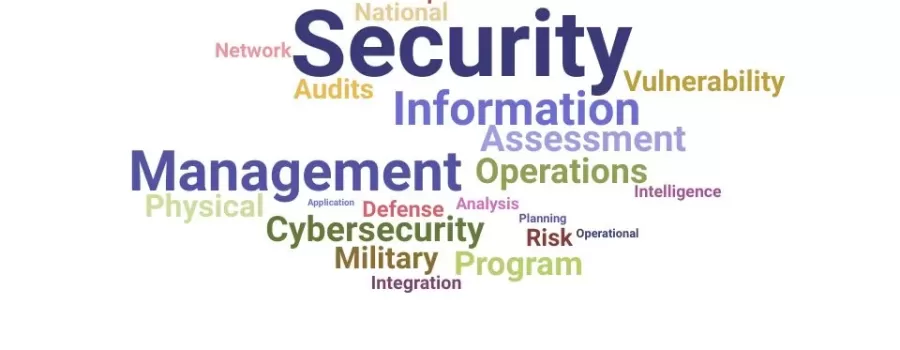Table of Contents
Introduction
Small businesses are not exempt from the growing threat of cyberattacks. Despite their size, they are lucrative targets for cybercriminals due to the perception of weaker security measures compared to large enterprises. To fortify their defenses, small businesses can benefit greatly from adopting Security Program Management (SPM). This article explores what SPM is, how it works, its main components, the distinction between an Information Security Management System (ISMS) and SPM, reasons why SPM is a worthwhile strategy, methods for its implementation, and who bears the responsibility for its maintenance.
What is Security Program Management (SPM)?
Security Program Management (SPM) is a holistic approach to managing and improving an organization’s cybersecurity posture and is a critical aspect of maintaining the safety and protection of an organization’s assets, information, and people. It encompasses a set of policies, procedures, and practices that systematically identify, assess, and mitigate security risks to protect an organization’s assets, including sensitive data, infrastructure, and reputation. SPM goes beyond merely implementing security technologies; it aligns security efforts with the organization’s strategic objectives, ensuring that security is an integral part of its overall business strategy. The most effective security programs also address the organization’s unique security needs, industry standards, and regulatory requirements.

How does SPM work?
In Security Program Management (SPM), there are several critical steps to bolster an organization’s cybersecurity. It all starts with an initial assessment, where the organization’s current cybersecurity status is evaluated, including asset identification, threat analysis, vulnerability assessment, and gauging the impact of potential security incidents. Subsequently, based on this assessment, security policies and procedures are meticulously crafted, providing clear guidelines for employees to ensure consistent security practices company-wide. SPM also involves the implementation of diverse security controls such as firewalls, antivirus software, access controls, and encryption to safeguard valuable assets. Continuous monitoring of network and systems is vital, enabling swift detection and response to security incidents, facilitated by a well-defined incident response plan.
Recognizing that employees often pose cybersecurity vulnerabilities, SPM includes training and awareness programs to educate staff on best practices and the importance of adhering to security policies. Lastly, SPM incorporates regular auditing and assessments to evaluate the effectiveness of security measures and pinpoint areas for improvement, ensuring ongoing protection.
By analyzing these risks and outputs, security program managers can prioritize the allocation of resources and implement appropriate safeguards. Once the risks are assessed, security program managers can start developing a robust security strategy. This involves designing and implementing security policies and procedures that address the identified vulnerabilities and threats.
What are the main components of an information security program?
A well-crafted security program includes a combination of physical security measures, such as access controls and surveillance systems, as well as cybersecurity protocols, including firewalls, antivirus software, and employee training. Implementing an information security program involves collaboration with various stakeholders, including executive management, IT departments, and human resources.
Continuous improvement is also a crucial aspect of security program management. It involves analyzing past incidents, monitoring trends, and evaluating emerging technologies to enhance the organization’s security posture. Security program managers must stay informed about the latest threats, vulnerabilities, and best practices in the field to provide the organization with up-to-date protection.
Here’s a breakdown of the key components in a SPM:
- Security Policies and Procedures: These documents define the organization’s security objectives and outline the measures and practices to achieve them.
- Risk Management: A risk assessment process helps identify and prioritize security risks, allowing the organization to allocate resources where they are needed most.
- Security Controls: These are technical and procedural safeguards that protect against identified risks. Examples include firewalls, intrusion detection systems, and encryption.
- Incident Response Plan: A well-defined plan outlines the steps to take in the event of a security incident, minimizing damage and downtime.
- Employee Training and Awareness: Employees need to be educated about security threats and best practices to prevent breaches caused by human error.
- Security Monitoring and Reporting: Continuous monitoring of network and system activity helps detect and respond to security incidents promptly. Reporting mechanisms ensure that relevant stakeholders are informed.

Difference between an Information Security Management System (ISMS) and SPM?
Information Security Management System (ISMS) and Security Program Management (SPM) are both critical frameworks for safeguarding an organization’s digital assets and data. They share common goals of enhancing cybersecurity, but they also have distinct characteristics that set them apart.
Similarities:
- Security Focus: Both ISMS and SPM are primarily concerned with improving an organization’s cybersecurity posture. They aim to protect sensitive information, mitigate security risks, and ensure business continuity.
- Risk Assessment: Both frameworks involve the assessment of security risks. They require organizations to identify vulnerabilities, evaluate threats, and prioritize security measures based on the potential impact and likelihood of incidents.
- Policy Development: Both ISMS and SPM entail the development of security policies and procedures. These documents provide guidelines and standards for security practices within the organization, promoting consistency and clarity.
- Compliance: ISMS and SPM both address the need for compliance with industry standards and legal regulations. They help organizations align their security practices with relevant laws, such as GDPR or HIPAA, and meet certification requirements like ISO 27001.
Differences:
- Scope: Perhaps the most significant difference is the scope. ISMS is a specific framework that primarily focuses on managing information security risks. It is often aligned with standards like ISO 27001 and involves specific security controls. SPM, on the other hand, is broader in scope, encompassing all aspects of security within an organization, including physical security, personnel security, and business continuity, in addition to information security.
- Flexibility: ISMS tends to follow a standardized framework, making it less flexible in adapting to an organization’s unique needs. SPM, however, is more adaptable and can be tailored to suit an organization’s specific goals, industry, and size.
- Integration with Business Strategy: SPM places a strong emphasis on aligning security efforts with the organization’s overall business strategy. It ensures that security is integrated into all business processes and decisions. ISMS, while contributing to security alignment, may not be as explicitly focused on strategic integration.
- Responsibility: ISMS often designates a specific Information Security Officer or team responsible for its implementation and maintenance. SPM, being more comprehensive, involves a shared responsibility across the organization. Senior leadership, the IT department, employees, and sometimes a dedicated security team all play roles in SPM.
In summary, ISMS and SPM are both valuable frameworks for cybersecurity management, with ISMS offering a more focused approach primarily related to information security, while SPM takes a broader view and integrates security into the overall organizational strategy. The choice between the two depends on the organization’s specific needs, goals, and resources.
Methods for implementing an SPM
Implementing a robust Information Security Program (ISP) / Security Program Management (SPM) is essential to protect an organization’s digital assets and sensitive data. A comprehensive approach to implementing an ISP involves several key steps. First, organizations should conduct a thorough risk assessment to identify potential threats and vulnerabilities. This assessment serves as the foundation for understanding the organization’s unique risk landscape. The National Institute of Standards and Technology (NIST) provides valuable guidance in their Special Publication 800-30, “Guide for Conducting Risk Assessments,” which offers a structured methodology for assessing risks.
Following the risk assessment, organizations must develop a set of information security policies and procedures. These policies should align with the identified risks and establish guidelines for mitigating them. NIST’s Special Publication 800-53, “Security and Privacy Controls for Information Systems and Organizations,” offers a comprehensive set of security controls that organizations can use as a reference for policy development and implementation. These controls cover various aspects of information security, from access control to incident response. Implementing and enforcing these policies creates a structured framework for consistent security practices throughout the organization.

Additionally, continuous monitoring, regular security audits, and employee training and awareness programs are essential components of a successful ISP. By adhering to these best practices and leveraging resources like NIST publications, organizations can strengthen their information security posture and reduce the risk of cyber threats. We have consultants that are more than happy to assist as well!
Who is responsible for implementing and maintaining an SPM
Implementing and maintaining an information security program (ISP) within a company is a collaborative effort involving various key stakeholders. Security program managers bear the responsibility of overseeing incident response and crisis management, requiring them to develop and execute effective response plans in the event of security breaches, minimizing impact and further damage.
This involves coordination with law enforcement, notifying affected parties, and conducting investigations to determine the incident’s cause and necessary corrective actions. Additionally, security program managers must effectively communicate the significance of security measures and secure buy-in at all organizational levels, ensuring compliance with relevant laws like the General Data Protection Regulation (GDPR) or the Health Insurance Portability and Accountability Act (HIPAA).
This shared responsibility includes senior leadership championing the security program, allocating resources, and fostering a security-conscious culture, while the IT department implements technical security measures and monitors threats. All employees are expected to adhere to security policies, report incidents, and participate in security awareness training. In larger organizations, a dedicated security team or officer may oversee the security program’s execution.
Conclusion
In conclusion, security program management is a complex and critical function that requires in-depth knowledge, strategic thinking, and effective communication skills. By conducting risk assessments, developing tailored security strategies, implementing safeguards, and regularly monitoring and updating the program, security program managers ensure the safety and protection of an organization’s assets, information, and people.





